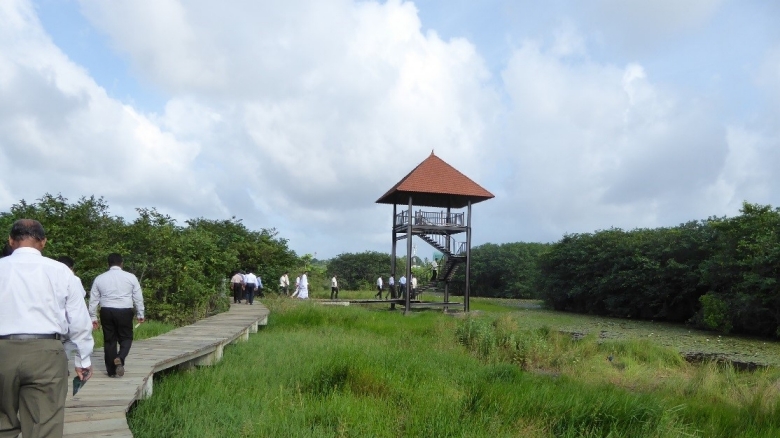Wetlands Park
It is estimated that if Colombo was to lose all its wetlands, then the Colombo Metropolitan Region (CMR) would be at a risk of losing 1% of its GDP on average each year due to flood damage – similar to damages suffered in the massive floods that paralysed Colombo in November 2010.
The Wetland Park is critical for many reasons: It provides a relaxing recreational facility, helps with flood control, provides a refuge for flora and fauna, and moderates the temperature of the immediate surrounds. The park can also educate the public about the city’s natural resources as well as providing much-needed open space and walking paths.
The Beddagana demonstrative initiative is a first of its kind in Colombo. It has provided an exciting and unique experience in:
- Conservation and management of degraded wetlands through the provision of thoughtfully designed public access for education and recreation.
- Income generation for the city – it has been estimated that the recreational potential of the wetlands is approx about Rs 2 billion annually (around $13.6 million)
- Protecting the City’s natural capital against heightened risks of climate change induced disaster
“The Metro Colombo Urban Development Project, since inception in 2013 has completed most of its demonstrative initiatives such as Beddagana Wetlands Park. The complex and major works that would speed up efforts to reduce floods are yet to come. The World Bank is working in close collaboration with the Government of Sri Lanka and its citizens to reduce floods in the Colombo Metropolitan Region”.
- Yoonhee Kim, Senior Urban Economist and Project Leader for MCUDP
Metro Colombo Urban Development Project (MCUDP)
This project is the first Bank supported urban development project in Metro Colombo. The Bank has provided $213 million and the Government $100 million. The Bank has also mobilized a Japan Policy and Human Resources Development Fund (PHRD Grant) and Global Facility for Disaster Risk and Reduction (GFDRR) to further studies on flood mitigation and Colombo’s urban wetlands. Technical Financing has ensured robust decision making and analytical working, for example establishing the cost benefit of the city’s wetlands.
Over the coming years, the project will undertake an ambitious flood management program including drainage, underground tunnels and canal construction, flood gates and water diversion. It will also create a flood management system to maintain the drainage network. The estimated population of 2,553,000 people living and working in Colombo are all beneficiaries, however, the direct flood mitigation beneficiaries are estimated to be about 232,000 people.
Colombo will be better prepared for the future as its residents will be less vulnerable and more resilient to flooding. This will help protect the city’s increasing population, infrastructure and natural environment. A more resilient and livable Colombo will help reduce poverty and promote prosperity and help Sri Lanka realize its development potential.

